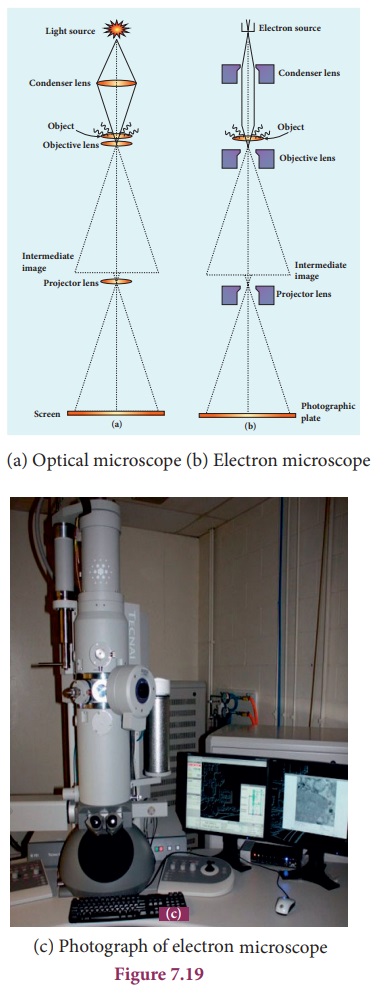Principle, Working | Physics - Electron Microscope | 12th Physics : UNIT 8 : Dual Nature of Radiation and Matter
Chapter: 12th Physics : UNIT 8 : Dual Nature of Radiation and Matter
Electron Microscope
Electron Microscope
Principle
This is the direct application of
wave nature of particles. The wave nature of the electron is used in the
construction of microscope called electron
microscope.
The resolving power of a microscope
is inversely proportional to the wavelength of the radiation used for
illuminating the object under study. Higher magnification as well as higher
resolving power can be obtained by employing the waves of shorter wavelengths.
De Broglie wavelength of electron is
very much less than (a few thousands less) that of the visible light being used
in optical microscopes. As a result, the microscopes employing de Broglie waves
of electrons have very much higher resolving power than optical microscope.
Electron microscopes giving magnification more than 2,00,000 times are common
in research laboratories.

Working
The construction and working of an
electron microscope is similar to that of an optical microscope except that in
electron microscope focussing of electron beam is done by the electrostatic or
magnetic lenses. The electron beam passing across a suitably arranged either
electric or magnetic fields undergoes divergence or convergence thereby
focussing of the beam is done (Figure 7.19).
The electrons emitted from the
source are accelerated by high potentials. The beam is made parallel by
magnetic condenser lens. When the beam passes through the sample whose
magnified image is needed, the beam carries the image of the sample.
With the help of magnetic objective
lens and magnetic projector lens system, the magnified image is obtained on the
screen. These electron microscopes are being used in almost all branches of
science.
Related Topics